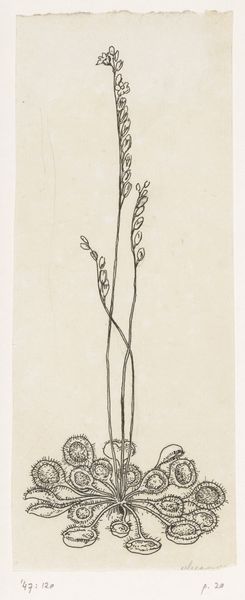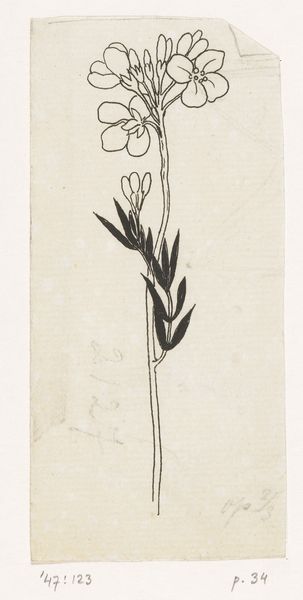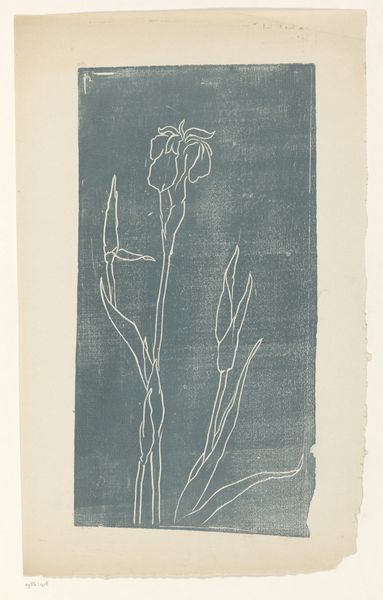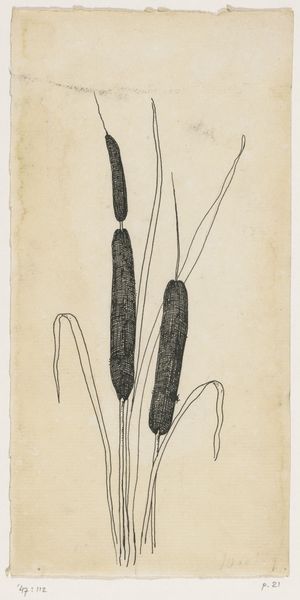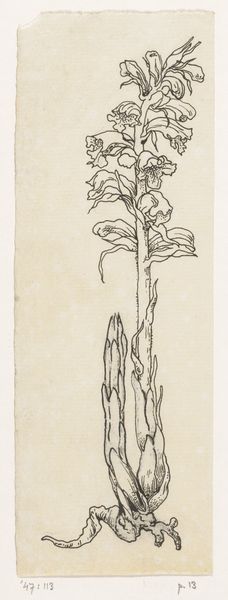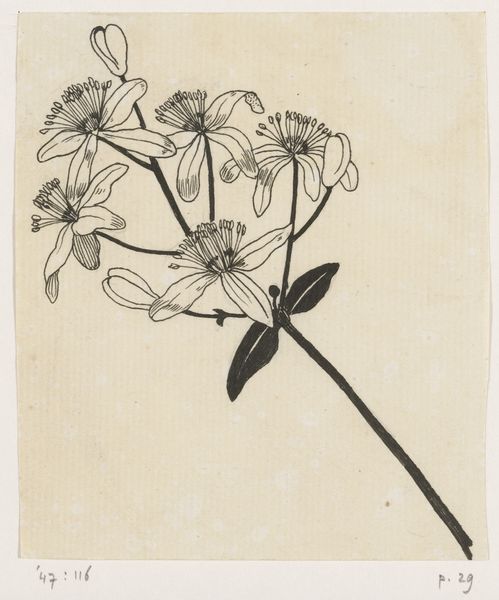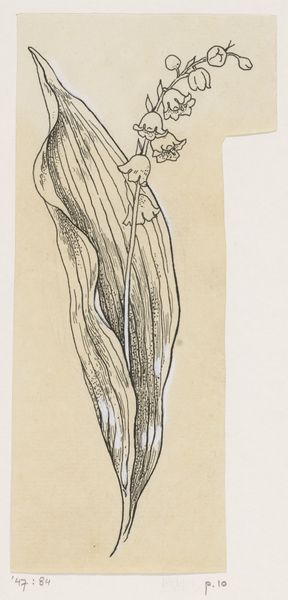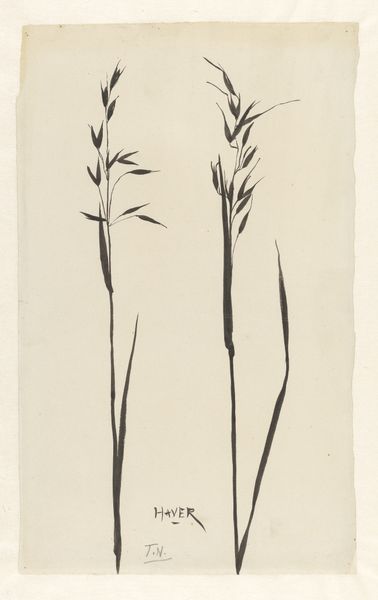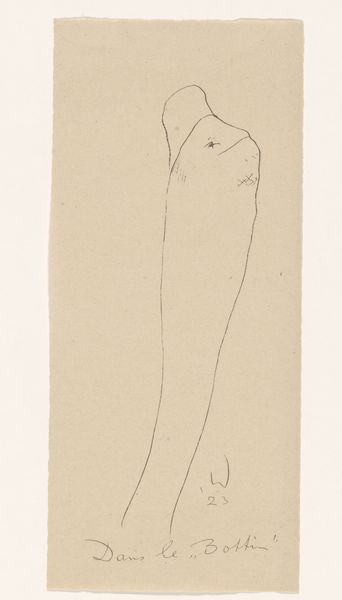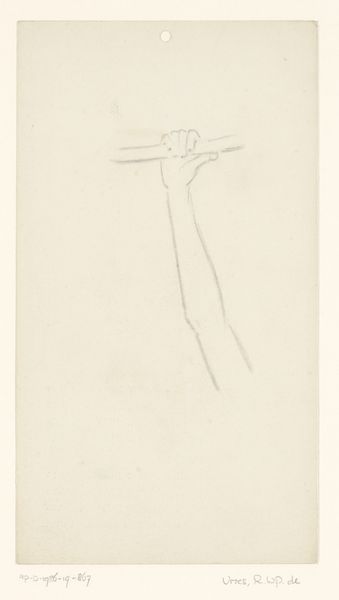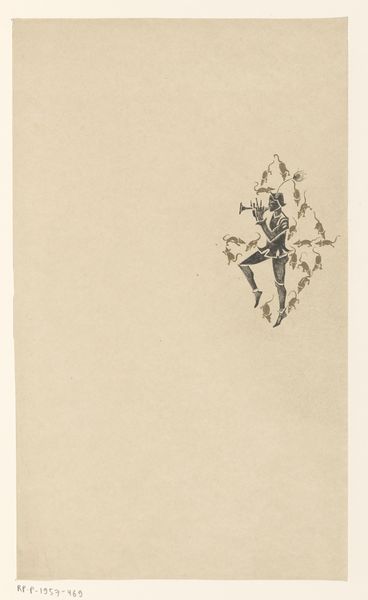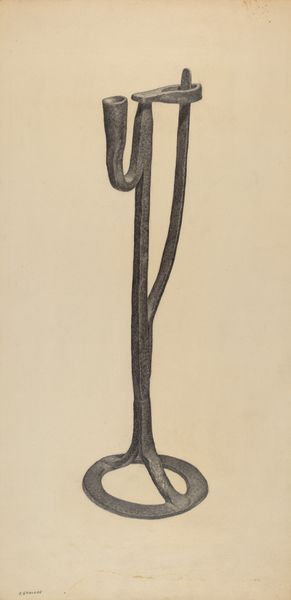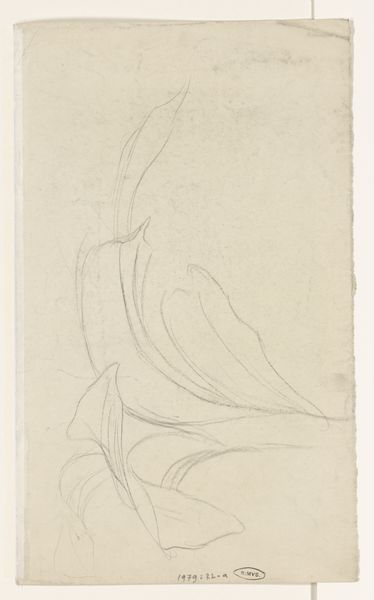
drawing, ink, pen
#
drawing
#
blue ink drawing
#
pen sketch
#
ink
#
line
#
pen
Dimensions: height 177 mm, width 81 mm
Copyright: Rijks Museum: Open Domain
Editor: We’re looking at Willem Wenckebach's "Sneeuwklokje," a delicate ink drawing from before 1893. The simplicity of the lines creates such a serene feeling. How do you interpret this work? Curator: It's striking how a simple snowdrop, or "sneeuwklokje," becomes a vessel for layered meanings. The downward-facing flower, rendered in ink, whispers of humility and perhaps even a contemplative mourning, a kind of turning inward. Think about how this image might have resonated within the cultural memory of its time. Editor: Mourning? That's interesting! I mostly see springtime. Curator: Consider the flower's posture as a symbolic gesture of deference, or a visual representation of nascent hope amidst starkness. Ink drawings often carry connotations of record-keeping or scientific observation, yet here, it's softened by the fluidity of the lines. Does that influence your perception? Editor: Yes, I see your point. The way it's rendered, it does feel more symbolic and less like a botanical illustration. It is also called Snowdrop, suggesting that the subject lives and blooms during periods of darkness. It evokes feelings of hope during hard times. Curator: Precisely. And in focusing our gaze so intimately on this single bloom, what kind of continuity might Wenckebach have been suggesting to his contemporary audience? What did seeing this humble plant mean to them? Editor: Thinking about the symbolic weight, I now appreciate how this seemingly simple drawing could hold so much more. It encourages us to look for hidden meanings in our surroundings. Curator: Indeed. Art allows us to reimagine familiar objects and cultural meanings. It prompts us to be more mindful of how we interact with symbols around us, revealing their enduring power and inspiring new modes of appreciation.
Comments
No comments
Be the first to comment and join the conversation on the ultimate creative platform.
